It's true, the best Italian food hails from Emilia Romagna, although I'm sure there will be some Italians who disagree. I'll never taste Parmigiano Reggiano cheese, Prosciutto, Mortadella or Balsamic vinegar in the same way after a trip through the heartland of Italian cuisine. Over the next few weeks, I'll publish a series of the photographs I took during my trip, and write something about each one of them. We met amazing people, from amazing families who believe very strongly in tradition and ultimately the product they produce with uncompromising love and attention.
I'll begin with Prosciutto or Parma ham which is a dry-cured ham, usually thinly sliced and served uncooked, known as prosciutto crudo in Italian, cooked ham is prosciutto cotto.
Britain is the largest international market for Parma Ham with more than 300,000 hams
and over 18 million pre-sliced packs sold each year, so I'm keen to speak to the family Galloni who have produced hams since 1960. They're respected the world over for their prosciutto and whilst you may not know the name, the taste is quite unique and as one of the major exporters, there's no doubt you'll have tried a slice or four of their prosciutto, if you're a lover of ham.
The hams we saw being processed were from the rear haunches of a pig, the breeds are specific too, and it's meat from the pigs of the Large White, Landrance or Duroc.
Pigs used for Parma Ham are born, raised and slaughtered in approved breeding farms and slaughterhouses.
There are just five key ingredients used for making the ham, Italian pigs, salt, air, time and a generous helping of love.
The process begins in the factory where the hams get checked and if they meet the exacting standards, trimmed for production.
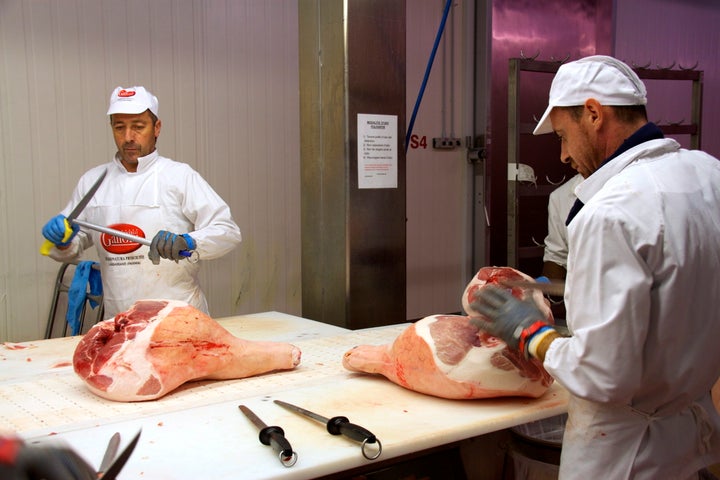
The meat is then tagged and stamped and moves on to be given a wet and dry rub with sea salt from Sicily. The job of the salt master or Maestro Salatore is one of the most important in the factory, and the highest paid, simply because they have to get the salt mix absolutely spot-on. The point is that the ham absorbs only enough salt to preserve it. Once the ham reaches the end of the process, it will have lost more than a quarter of its weight through moisture loss, ultimately helping to concentrate the flavour.
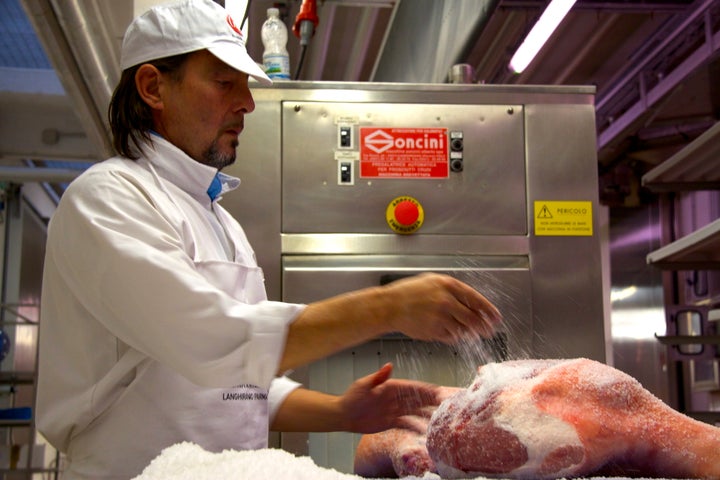
The salt-to-meat ratio is about 300g of salt for every 10 kilos of meat but he's so experienced, with 25 years under his belt, there's simply no need for scales. It's important he packs the salt around the knuckle bone to make sure the meat gets cured throughout.
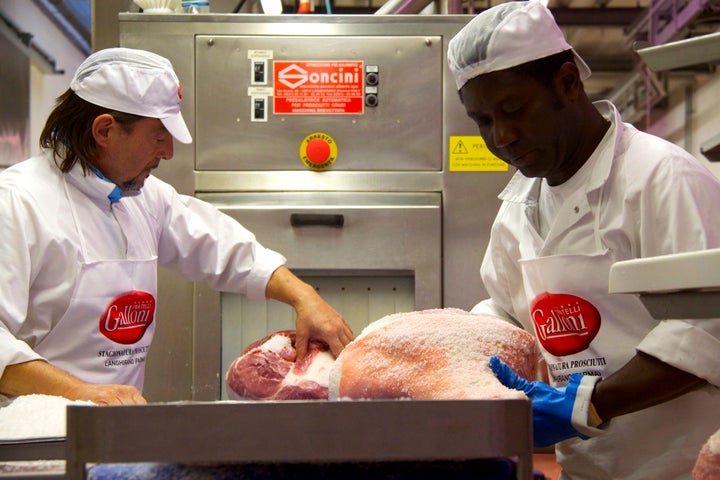
Most of the production is by hand and although the family could introduce machinery and increase output five-fold, they fear quality could be lost.
It looked easy, but even Chef Theo Randall had difficulty mirroring the work.
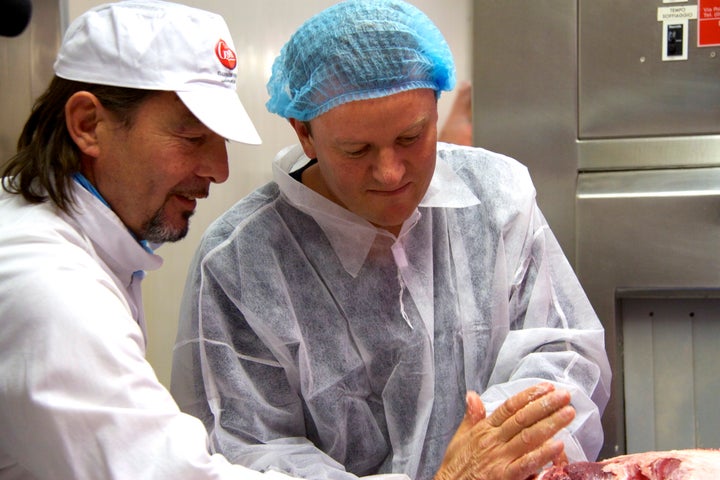
The raw meat is dried until its water content has evaporated, this happens between 1-2 months and is known as 'resting'.
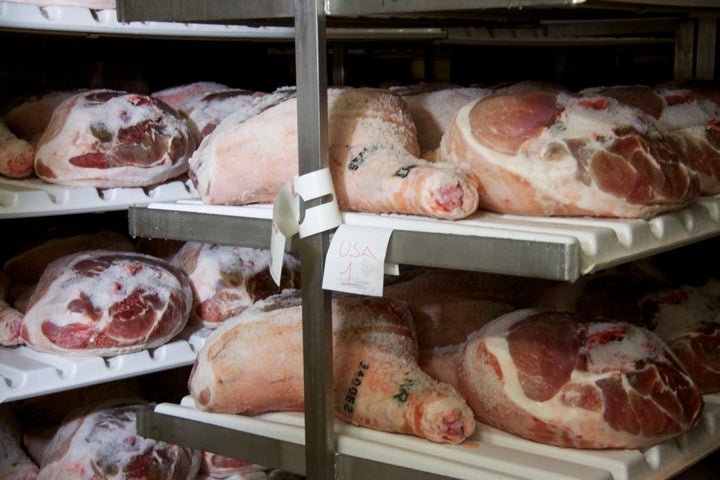
The salt is washed from the hams with tepid water and the drying process begins.
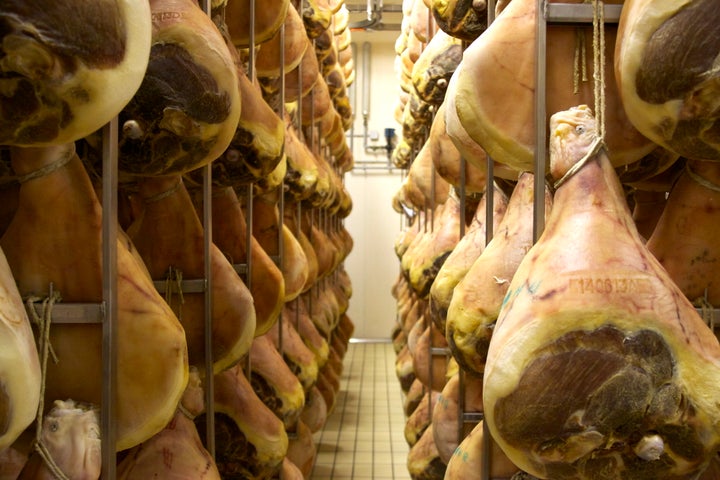
The pre-maturing starts after the hams get washed.

A paste made of flour, fat and pepper gets smeared on the exposed meat of the hams to prevent excessive drying.
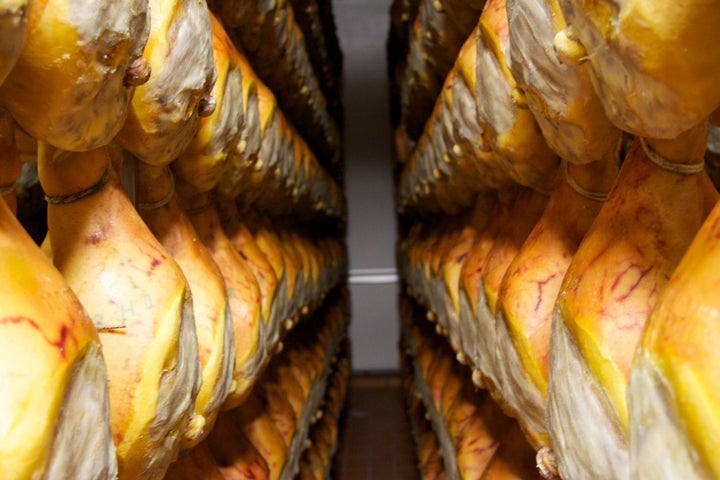
During the maturing process, the hams stay in a room where the temperature is set between 15-17 degrees. They're hung on wooden frames and it's here, in these conditions, when the hams take on their distinctive flavour. After about three months, the meat will have dried and hardened.
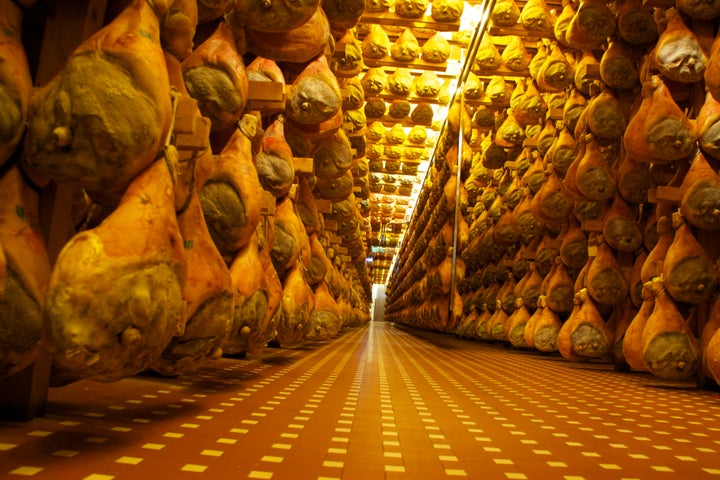
When the prosciutto is mature, an inspector takes a tool made of porous horse bone and jabs 5 areas of the prosciutto - a keen nose can tell whether the ham is of sufficiently high quality to receive the Parma Ham brand.

Hams that pass the test, are fire-branded with the official mark of the Consortium, the five-point ducal crown. The name 'Parma Ham' is reserved only for hams which carry this guarantee of authenticity.

If producers don't comply with strict rules laid out by the EU and Italian government, the product will not receive its D.O.P (Protected Designation of Origin) logo. All products which carry the DOP mark guarantee provenance and quality.
The ham is then de-boned and pressed to enable easier slicing.
Galloni have produced and patented the first dry-cured ham with a lower salt content, enriched with potassium. It has over 30% less salt than the average dry-cured ham on the market. 'Dulcis' is perfect for those who can't have too much salt or fat or for sportsmen who want to increase potassium levels in their diet. This has a long period of curing which lasts at least 16 months.
At the end of the tour we had a tasting session with Lorenzo Galloni who skilfully carved a bone-in ham with a sharp speciality knife.
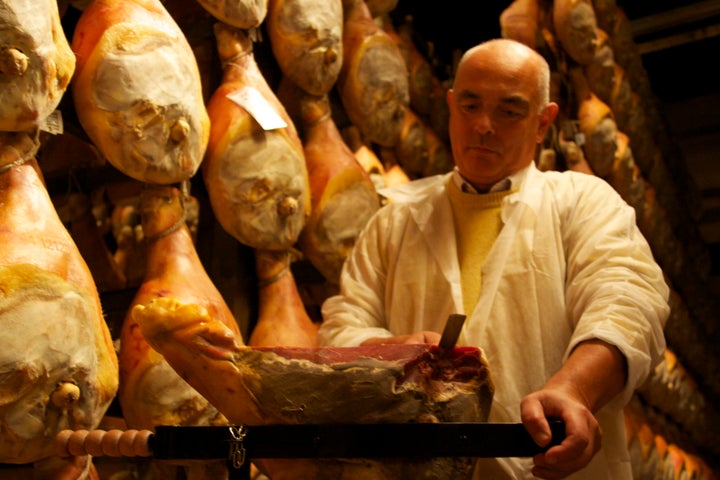
We also tasted some of the ham which was machine-sliced into paper-thin, translucent pieces.
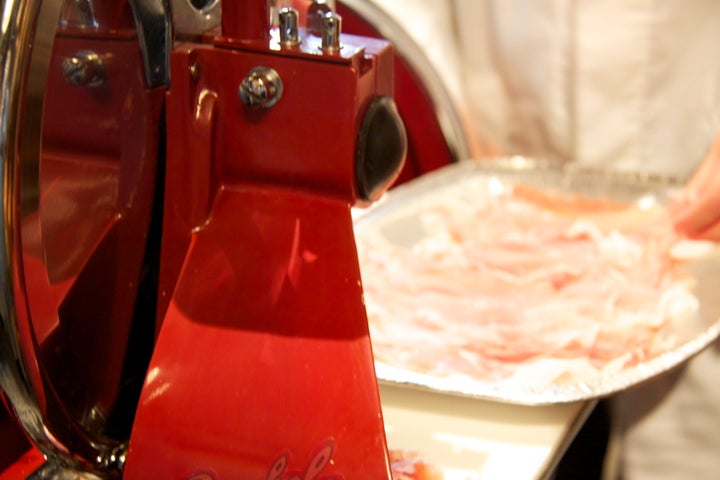
For a quick, easy and delicious antipasti recipe, head over to www.holdtheanchoviesplease.co.uk
Fratelli Galloni, Langhirano, Italy
www.galloniprosciutto.it